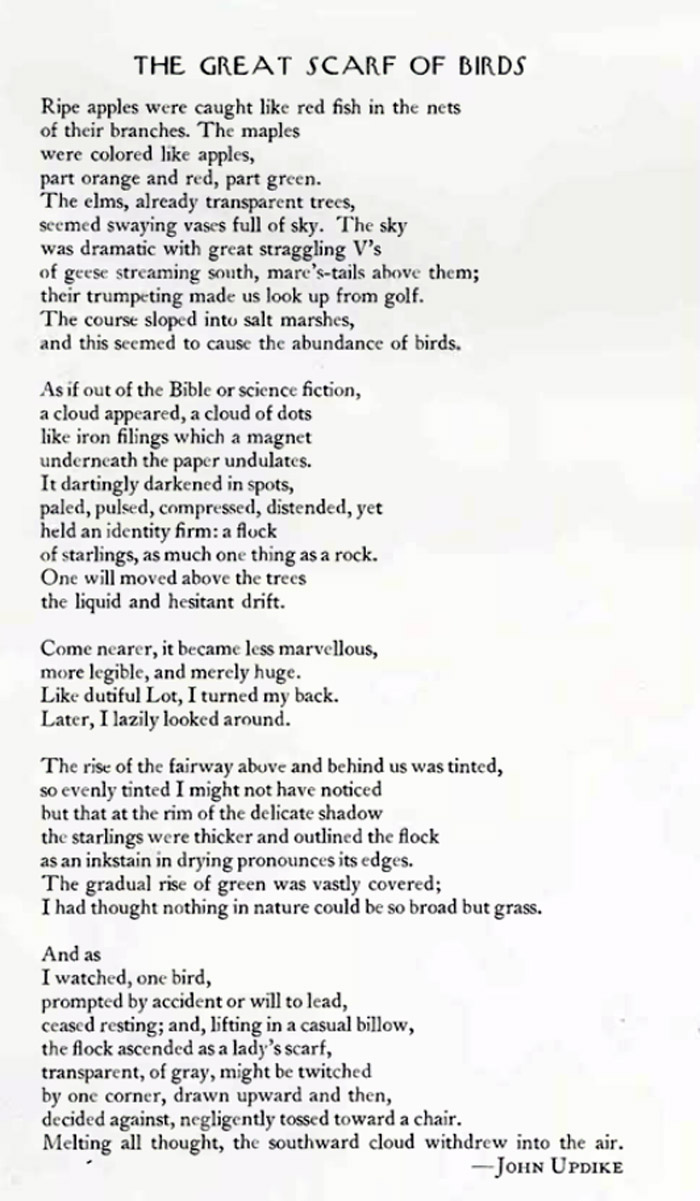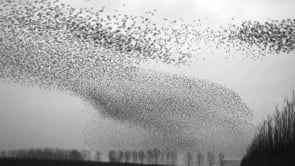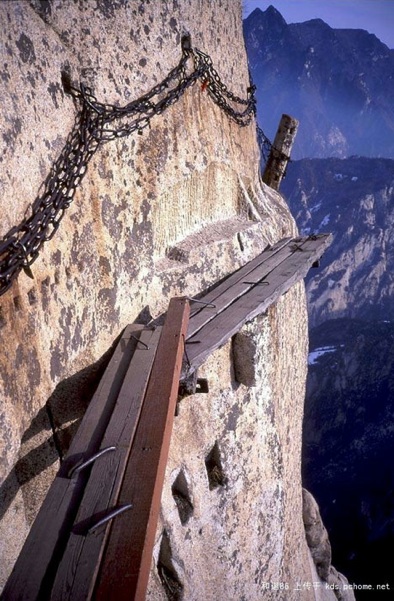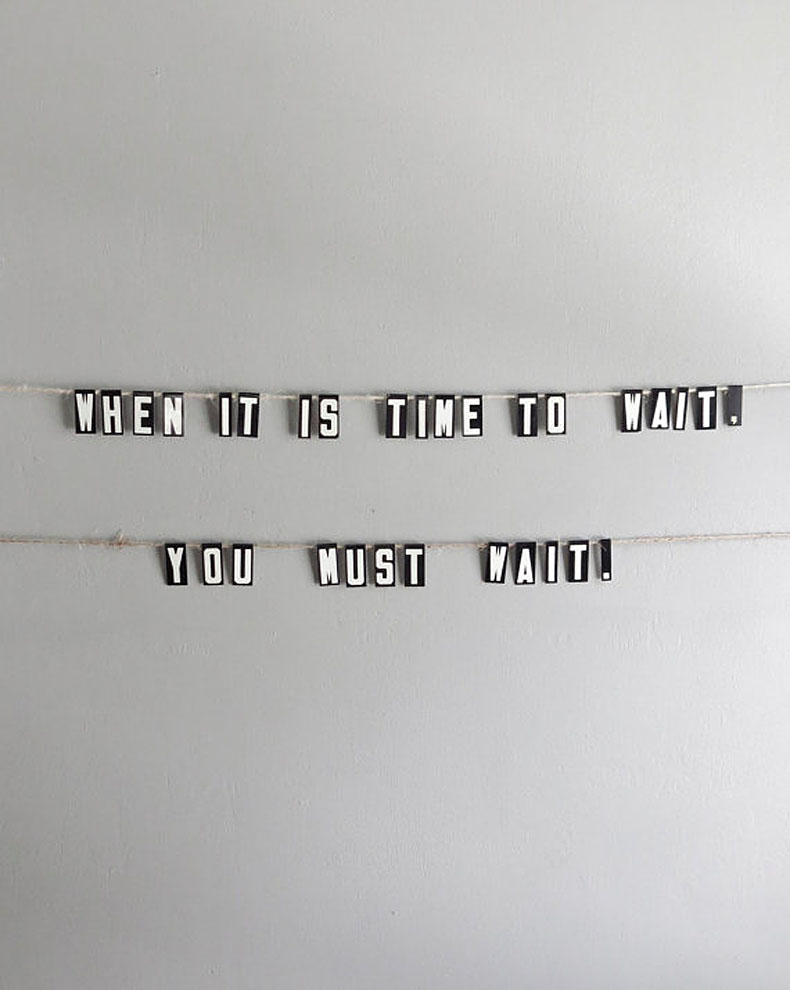(Video link here.) The pigeons I watch flying in swooping unison are a lovely, local sample of the astonishing murmurations of starlings Jan van IJKen captured in this sublime short video. Scientists have found many ways to explain what remains largely mysterious.
The best description we’ve read of that mystery, and its effect on a human being, was written by John Updike in The Great Scarf of Birds in the October 27, 1962 issue of the New Yorker (entire poem at bottom):
As if out of the Bible of science fiction,
a cloud appeared, a cloud of dots
like iron filings which a magnet
underneath the paper undulates.
It dartingly darkened in spots,
paled, pulsed, compressed, distended, yet
held an identity firm: a flock
of starlings, as much one thing as a rock.
One will moved above the trees
the liquid and hesitant drift……And as
I watched, one bird,
prompted by accident or will to lead,
ceased resting; and, lifting in a casual billow,
the flock ascended as a lady’s scarf,
transparent, of gray, might be twitched
by one corner, drawn upward and then,
decided against, negligently tossed toward a chair:
the southward cloud withdrew into the air.Long had it been since my heart
had been lifted as it was by the lifting of that great
scarf.






Sally, my friend (and photographer) Richard Barnes has also documented the Starling phenomenon. He took a series of photos in the EUR section of Rome about ten years ago that are quite beautiful. Many of them look more like graphite drawings than photographs.
The Starlings are a frequent sight in parts of Rome during specific times of the year. The sound of them morphing from one shape into another — first from miles away and then directly overhead — is really something to experience.
You might be interested to see Richard’s work. He’s done another beautiful series with birds as well, or rather, the nests birds make. The nests are a great example of improvisation — as they are made with bits and pieces of human flotsam and jetsam. String, ribbon, newspaper fragments and so on are woven or cemented into the structures.
When I was a senior in high school, in 1989, this poem was part of the AP English exam. There I was, eighteen years old, sitting in the auditorium with my number two pencils, transported out of test-taking focus by the last sentence (which is somehow missing from that New Yorker page… thank you for reprinting it above). I can still remember, re-feel, the feeling in my own chest upon reading it — although, over the years to come, I would mis-recall the line as, “Rarely before or since has my heart been lifted as it was by the lifting of those great birds.” The exam didn’t give the poet’s author, and the internet didn’t really exist yet. Decades later, with my semi-quote still playing in my head, I called the College Board and explained myself to the woman who answered the phone. “I’ve been thinking about that poem for twenty-five years,” I said. “I know what it is,” she replied.
Pamela, thank you so much for this. I think I’ve seen Richard Barnes lovely photographs of murmurations in my internet wanderings but forgot. BUT I didn’t know about his Bird Nest series, called Refuge. They are here and a wonder.
Wow, is that a perfectly-written memory and a story of a poem hitting hard and being carried for years. Thank you so much for posting it.
On my end, the poem wasn’t easy to find in its entirety, though there is a great deal of commentary about it. I found just a few lines then hunted it down to its original publication in the New Yorker, than typed it out into the post, merging it with a fragment I found elsewhere. I hadn’t noticed that the page from the New Yorker is missing that powerful last line. I wonder if Updike amended the poem later on. It’s curious that such a powerful poem is not all over the internet.